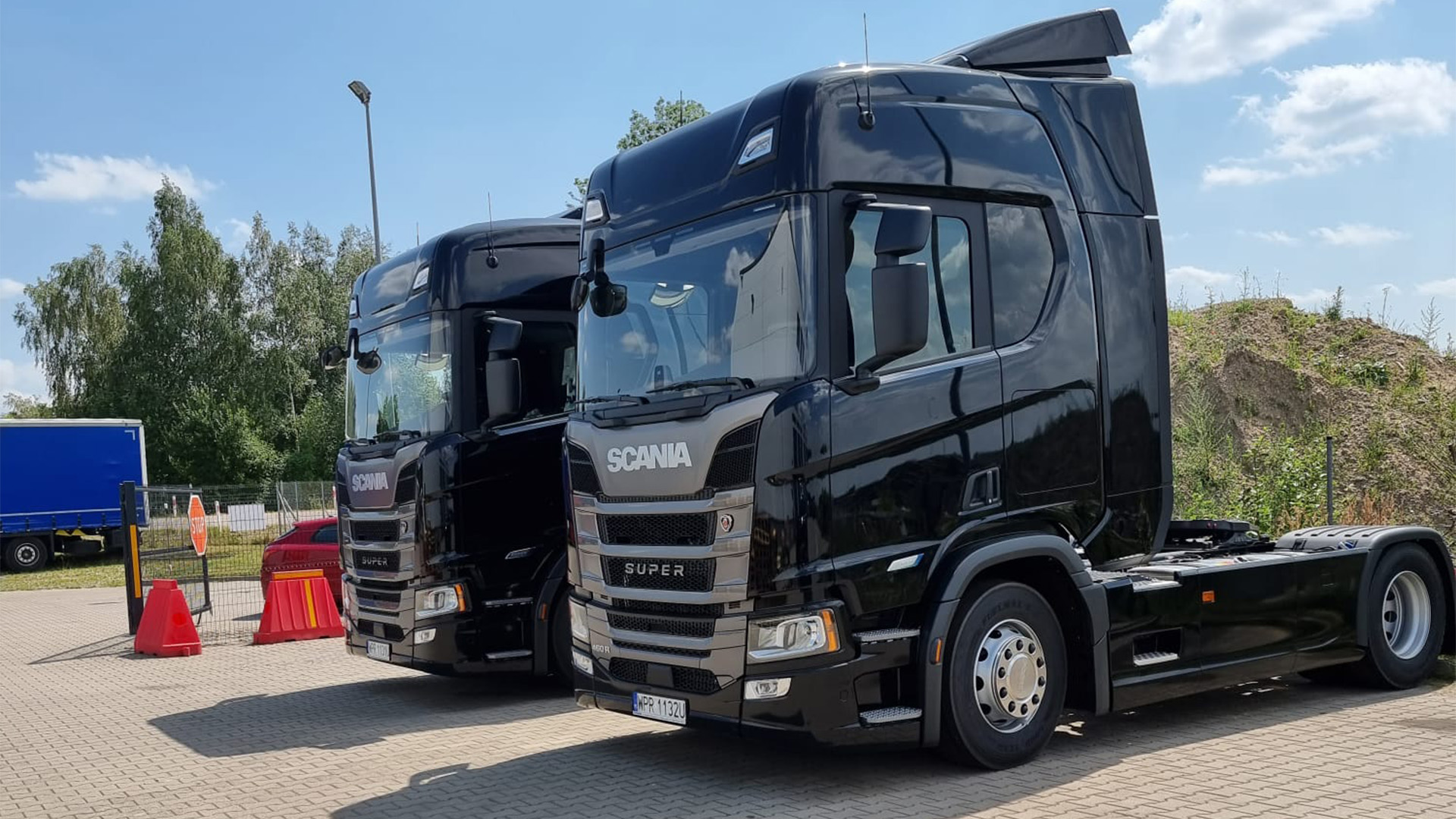
Susie Jones
Učinkovitost na cesti: kako Delintra SP. Z.O.O. optimizira svoj vozni park s sistemom SNAP
Ustvarjeno: 16. 08. 2024
•
Posodobljeno: 16. 08. 2024
Družba Delintra SP. ima v svojem voznem parku 45 vozil. Z.O.O. sestavljajo izključno tovornjaki, ki opravljajo tovorne storitve po vsej Evropi. Pogovarjali smo se z generalnim direktorjem voznega parka Rafalom Kaszubo, da bi izvedeli več o njegovih izkušnjah po podpisu pogodbe s SNAP.
Pridružitev in uporaba SNAP-a
"Nismo imeli nobenih pomislekov glede vključitve v SNAP," pojasnjuje. Rafał pojasnjuje enega od razlogov, zakaj so se odločili za prijavo, saj njihov vozni park redno potuje po Evropi:
"Eden od razlogov, zakaj smo se pridružili sistemu SNAP, je bilo veliko število parkirišč za tovornjake in deponij, ki sprejemajo plačila s sistemom SNAP."
Z več kot 600 storitvenimi partnerji v omrežju je iskanje parkirišč za njihove voznike postalo izziv in postalo brezskrbno.
Podpora in storitve za stranke SNAP
Družba SNAP je ponosna na to, da voznim parkom in voznikom zagotavlja podporo, ki jo potrebujejo za učinkovito delovanje. Naši večjezični skrbniki za stranke lahko voznim parkom in voznikom pomagajo pri poizvedbah. To se je Rafalu in ekipi podjetja Delintra zdelo koristno.
"Zelo sem zadovoljen s podporo in preprostostjo pridobivanja pomoči SNAP. Tudi v mojem maternem jeziku," pojasnjuje Rafał.

Dobro počutje voznikov in varna postajališča tovornjakov
Dobro počutje voznikov je vroča tema razprav v panogi tovornega prometa, pri čemer imajo pomembno vlogo standardi postajališč za tovornjake. Postajališča z različnimi urejenimi objekti lahko bistveno izboljšajo počutje voznikov.
Rafał je prepričan, da na to ne vplivajo le objekti:
"Najpomembnejši je občutek varnosti. Če se voznik počuti udobno, ko si vzame odmor in mu ni treba skrbeti za svoje blago in gorivo, se udobje pri delu poveča," trdi.
S sistemom SNAP lahko voznikom zagotovite, da parkirajo na lokacijah z varnostnimi ukrepi. Rafał pojasnjuje, da je koristno najti "mesto s seznama SNAP, pogledati njegov opis in stopnjo varnosti".
Na strani zemljevid SNAP lahko upravljavci voznih parkov in vozniki pred rezervacijo dobijo vse, kar morajo vedeti o vsakem mestu. Voznikom na poti aplikacija intruck zagotavlja katalog lokacij v njihovi bližini s seznamom objektov, vključno z varnostnimi elementi.
Prednosti uporabe sistema SNAP
Poleg obsežnega omrežja, ki je na voljo, Rafał navaja, da sta enostavnost in prilagodljivost uporabe sistema SNAP njihovim voznikom prinesla veliko koristi.
"Parkiranje za naš vozni park je enostavno najti, plačilo pa je prilagodljivo. Naši vozniki imajo koristi od tega, da lahko rezervirajo parkirno mesto, kar pomeni, da jim ni treba skrbeti, da ga ne bi našli."
Na vprašanje, kaj svetuje voznim parkom, ki razmišljajo o registraciji v SNAP?
"Ne oklevajte, pridružite se družini SNAP."
Še danes prijavite svoj vozni park na SNAP
SNAP se na vsej celini uporablja vsakih 13 sekund. Pridružite se več kot 8.000 voznim parkom, ki uporabljajo račun SNAP.



